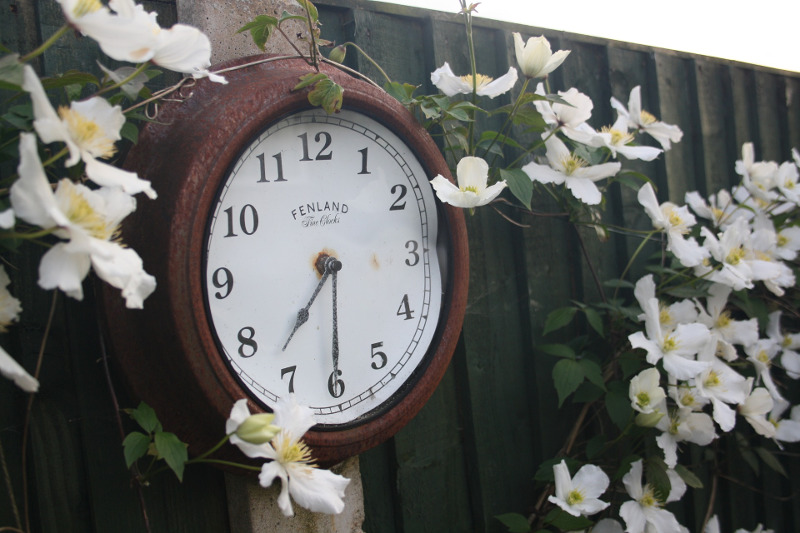A lush tapestry of clematis in full bloom is breathtaking. To call up the flowers you dream of from your clematis, it’s helpful to understand your plant’s needs. Clematis tend to be heavier feeders, in other words, HUNGRY. They basically like to snack all season. However, you can overdo it.
You may have many questions: should you fertilize a newly planted clematis vine? If so, how often? Can you over-fertilize? Can fertilizer boost healthy growth on a sickly plant? Read on for full details.
How to Fertilize Clematis
One of the first considerations is that Clematis prefer a neutral soil in the pH range of 5.5-7.0, so before planting, make sure your soil is in that range, whether in a garden bed or a container. The most accurate and detailed way to do this is with a test through your county’s agricultural extension office, but you can also use simple kits at home.
If your soil is too acidic and you need to make your soil more alkaline, you can add agricultural lime. Compost is a welcome addition while planting and mulching the roots to keep them cool and regulate the plant’s nutrient uptake.
Then choose a fertilizer that is lower in nitrogen and higher in potassium and phosphorus to start once your plant is putting on buds. Too much nitrogen will encourage leaves to grow instead of flowers. This is especially important in spring when buds are about 2” long. Then some experts recommend alternating the lower-nitrogen fertilizer with a balanced liquid fertilizer such as 10-10-10 ever 4 to 6 weeks through August.
Keep the vines consistently well-watered, but not soggy, throughout the growing season for the best results.
Best Time to Fertilize Clematis
The ideal time to feed and fertilize your clematis begins in spring and continues lightly through the growing season. You have two options: the simplest would be a slow-release fertilizer in spring. The ideal choice would be a balanced fertilizer such as 10-10-10 or a lower nitrogen type like 5-10-5. This will provide low-key, steady feeding.

To really boost blooms, you can go a step further and alternate the lower-nitrogen fertilizer with a balanced liquid fertilizer every 4-6 weeks during the growing season.
Best Fertilizer for Clematis
At planting time, amend the soil with compost and organic matter if needed to increase the alkalinity of a soil after a soil test.
During the plant’s first spring, start with a low-nitrogen fertilizer such as 5-10-5 – either a slow-release, one-time use, or a liquid type that can be repeated alternately through the season with a balanced liquid like 10-10-10.
Chemical fertilizers such as Miracle-Gro, properly formulated, will boost blooms, but organic fertilizers are safer for the environment as chemicals leach into the water table and the organisms in the soil, affecting insects, birds, and fish.
Clematis Fertilizing Tips
- Clematis need an alkaline soil pH range of 5.5-7.0.
- Mulching and consistent water will keep your plant able to feed.
- Clematis like regular feedings, but follow instructions – more is not better.
- Use a lower-nitrogen fertilizer in early spring until the buds are at least 2” long, then a liquid balanced fertilizer is fine if desired.
Warnings
-Always wear protective gloves and a face mask when handling chemical fertilizers.
-Closely follow all directions and storage guidelines that are on the fertilizer label.
 |
Author Alison Cotsonas - Published 14-12-2021 |
